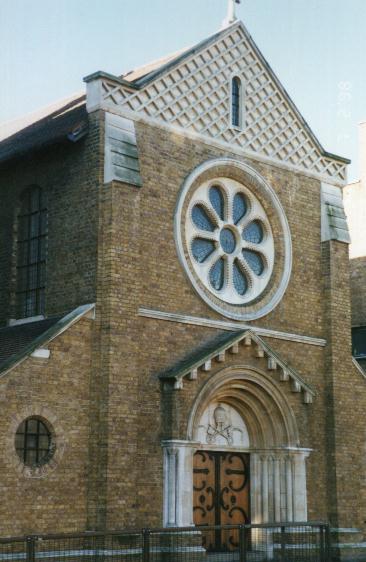
St. Mary's Church
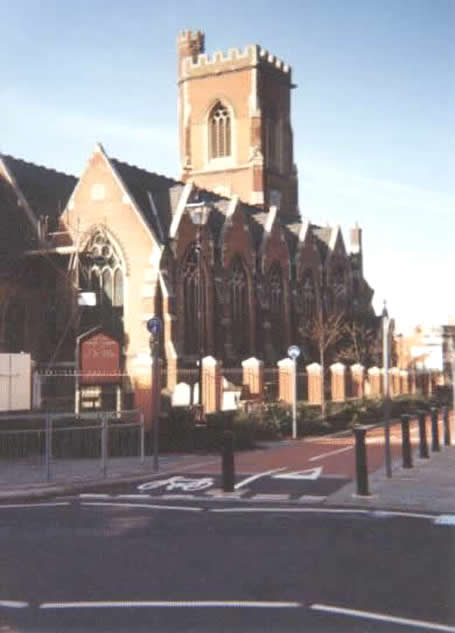
The town of
In 1642, the church was damaged by Roundhead soldiers returning from the Battle of Turnham Green, in protest at Rector Featley, a writer of religious tracts, who was believed to support the Royalists.
The Church was the focus of Charitable giving from 1601, when money and property were left in the care of the church for the giving of alms and for the maintenance of a clean water supply. The Church continues to play a key role in administering the funds that still remain from these donations so long ago. The town was governed by the Church Vestry up until 1865, when the growth was so great that it required a Local Board to be formed. The Church Vestry was responsible for the building of alms houses and for the care of the sick and elderly, for the opening of the first formal school facilities in the town, and for the maintaining of the highways and the water supplies.
The town began as a farming settlement, but soon developed into an important refreshment stop on the long road from
The heavy industry has moved away from
Few in the town can fail to be affected by the Church, even if not regular members of the congregation. The Church Clock marks the passing of time with it's chimes, and many in the town will have been christened or married in the church. When the bells are being rung, and the birds are singing it is easy to imagine that you are in a country village. The Rector and her colleagues take an active part in all aspects of the community, performing an extremely valuable service to us all. With such a long history, the Church represents one of the few enduring links, and must not be allowed to fall into disrepair.
The

Looking up Mill Hill Grove to the church on the hill

St Mary’s Church with, on the right, the London and South Western Bank and to the left, King Street. The area in front of the Church, formerly dense housing and shops was cleared in the late 1900’s and is laid out as a garden.
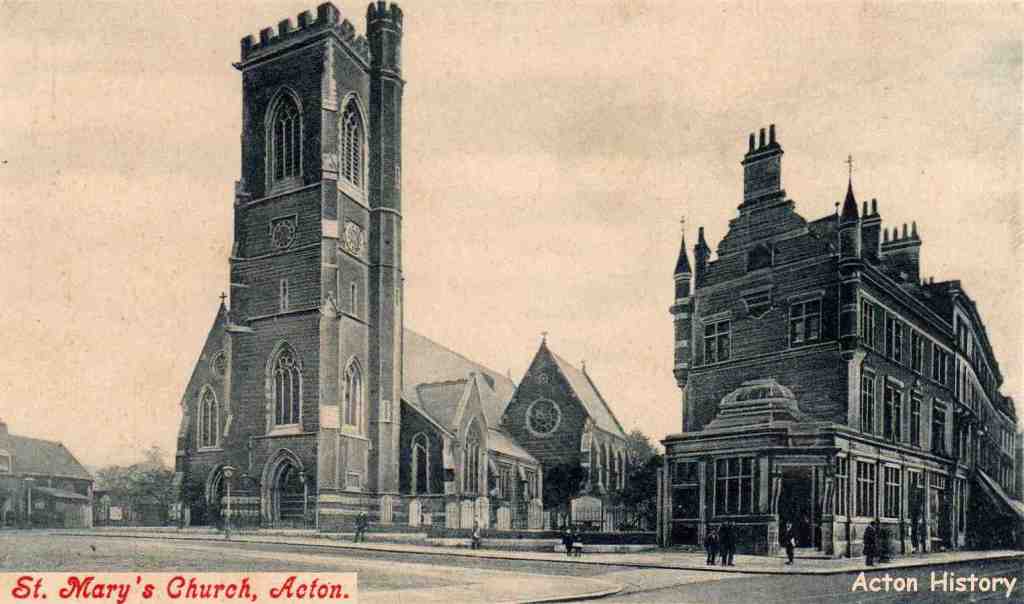
St Mary’s Church with, on the right, the London and South Western Bank.

The church from Churchfield Road, looking South West. (DK)
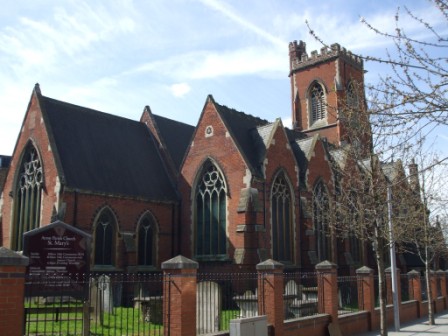
A similar view today.
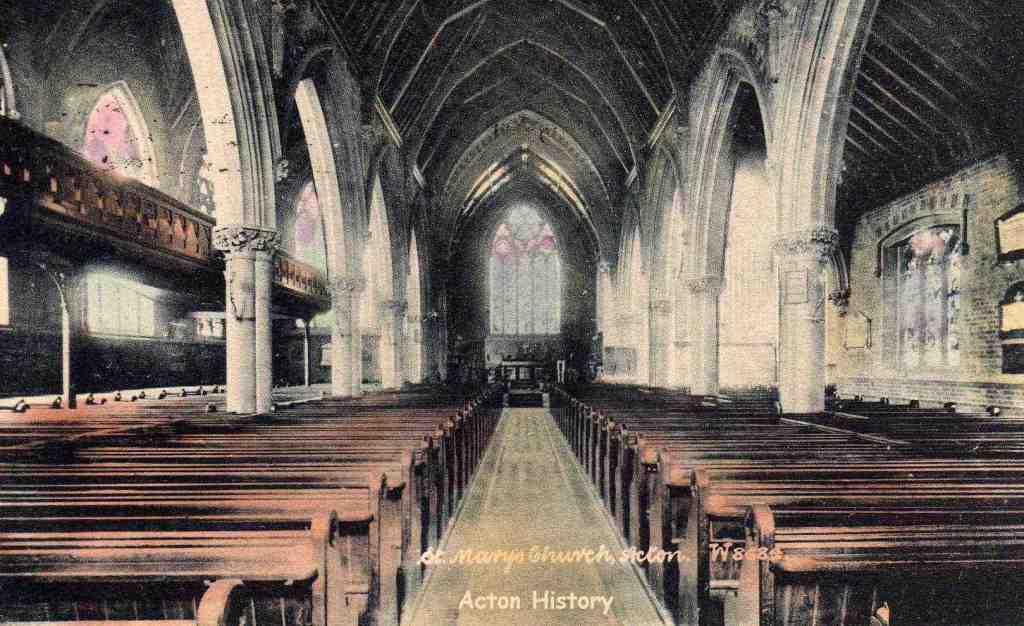
The interior of the St Mary's Church. Note the Gallery on the left (north side) that has now been removed.
A description, and pictures of many of the memorials in the church can be seen by visiting the middlesex-heraldry web site, which is based upon T & A Harper Smith, Memorials in St Mary's Acton (Acton Past and Present No.12, 1987).
Acton Baptist Church
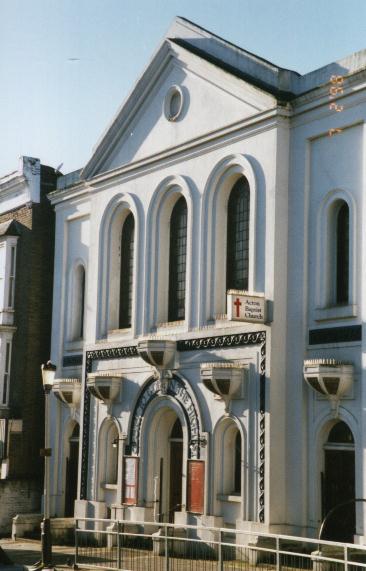
Our Lady of Lourdes
This church building was opened for public worship Sunday, 28 September 1902.
Visit Our Lady of Lourdes' own website
St Dunstan's - The Goldsmith's Church

Acton Hill Church
Wesleyan Church, Acton Hill, now the Acton Hill Methodist Church.
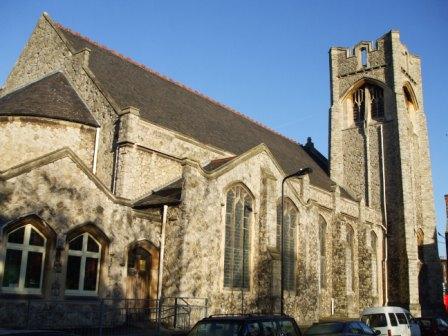
View from Woodlands Park.
In 1907 this church replaced the earlier chapel, still existing in Gunnersbury Lane. It was built on site of “The Oaks”.
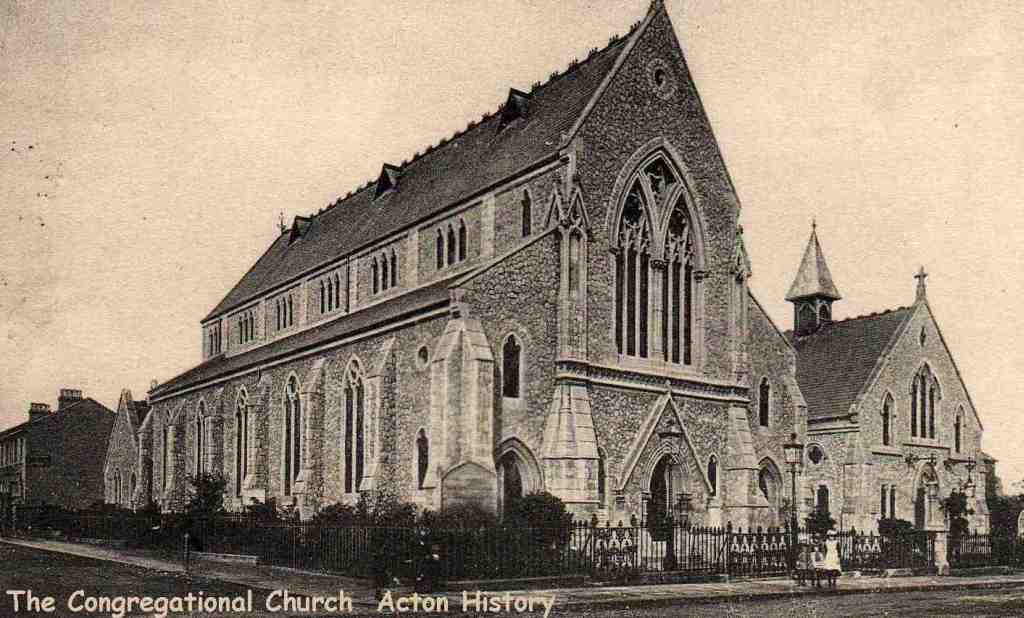
The Congregational Church, Churchfield Road.
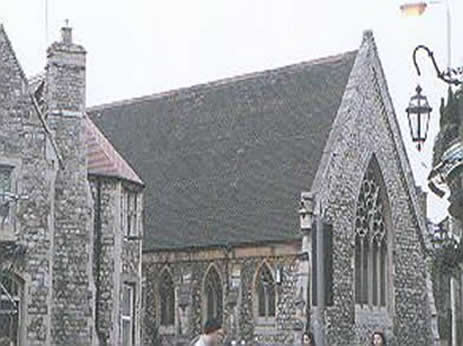
The former Wesleyan Chapel.
St Albans Church, Acton Green

St Alban’s Church, Acton Green built in 1887/78 in Edwardian times, and (below) about 2000.

Foundation Stone.
The former All Saints Church, South Acton.
South Acton was an area of dense housing and many small businesses, the most predominant of which were laundries. This church was founded by Andrew Hunter Dunn, who raised the funds to build the main church, a school, and a number of mission churches and parish rooms in South Action. He went on to be the Bishop of Quebec in Canada.
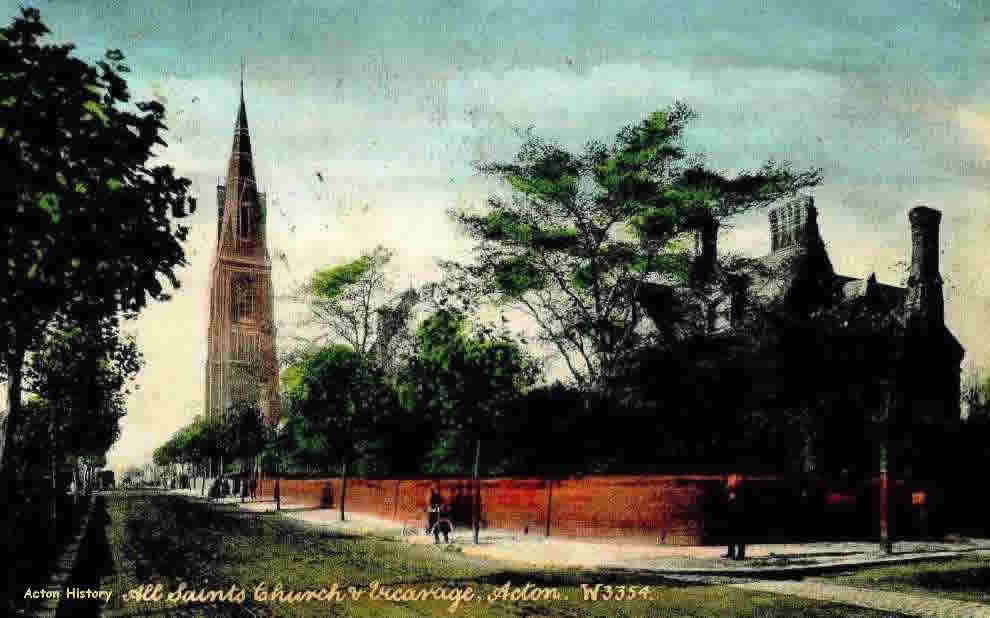
All Saints' Church, Bollo Bridge Road.
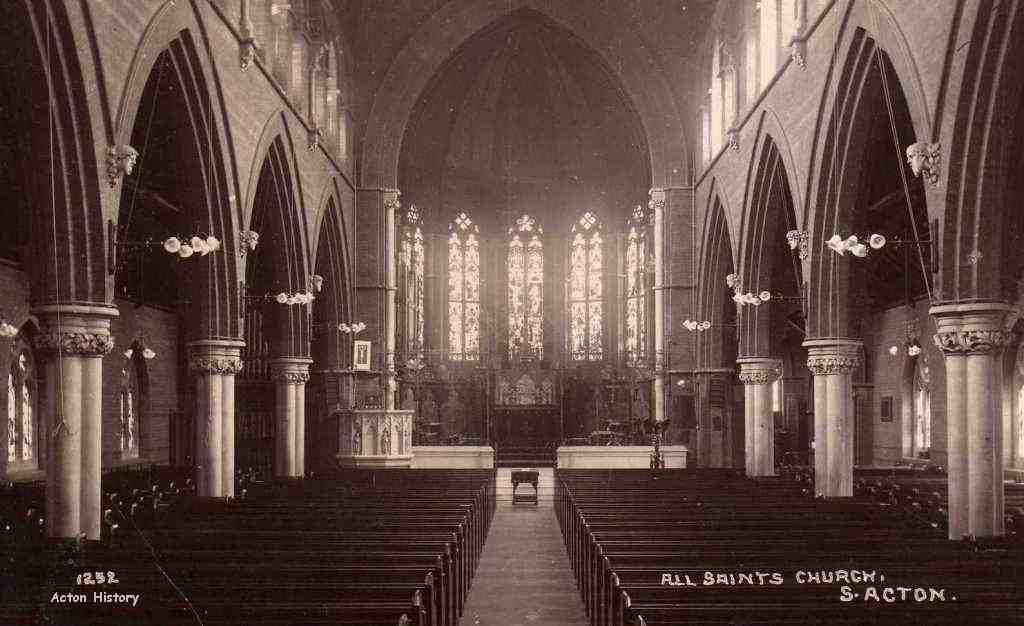
All Saints' Church, Interior.

Parish Hall, South Acton.
Old Wells Discovered – June 2006
The photographs below were provided by the Revd Preb. Jackie Fox, former Rector of St Mary’s Church. They show two old wells adjacent to the church tower exposed by building work on the
The area to the west of the church tower was full of buildings until 1894 and there was an alley called Church Passage in front of the tower, only 2-3 metres wide from the face of the tower. The passage was level with the pavement in the high street, but the levels must have changed since then as the road was improved. The passage was gated with a central lantern over the gate. See




Most of the postcard images on this page have been provided courtesy of Mr Paul Lang. it is believed that all the images of old postcards on this page are out of copyright.

